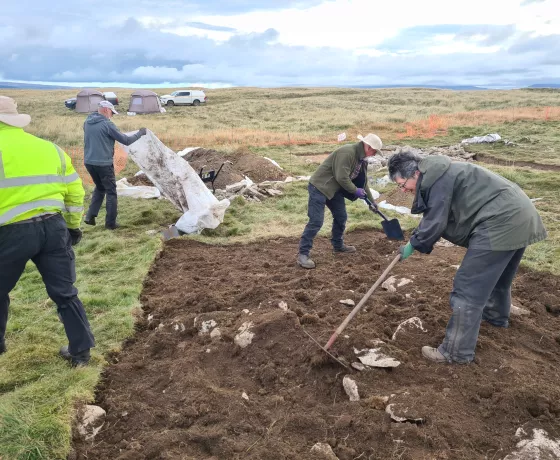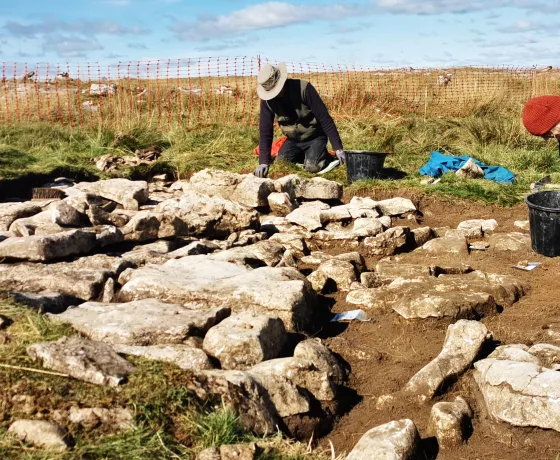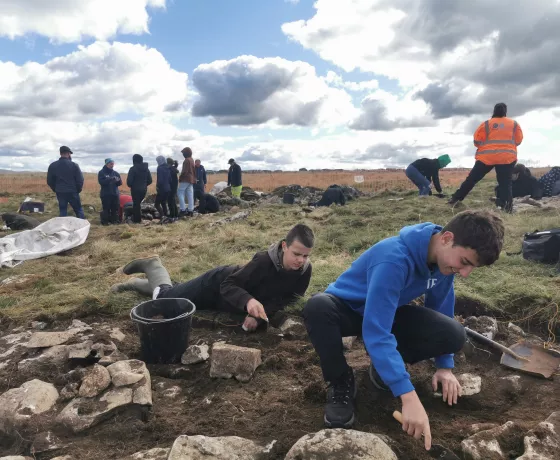After yesterdays down pour a disappointing check of the forecast suggested today would be worse and at 9am there was every reason to expect we may have had to abandon site at some point. Donned in our waterproofs and in preparation for the impending monsoon the first order of business was to erect the second tent, however, no sooner was it up it stopped raining and by the afternoon we were bathed in sunshine!
Yesterday’s excavations had suggested a significant depth of subsoil in trench 1 in contrast to the remainder of the site where so far we had seen little more than top soil, and a smaller trial hole was opened up within one corner of the trench to better investigate its depth. Thanks to the hard graft of Jan, Claire and Janet we managed to reach a depth of 0.8m where flecks of charcoal were encountered for the first time. A sample of this deposit was taken for later analysis and has the potential through carbon 14 dating to provide us with a date for this deposit and perhaps give us a better understanding of the soil formation processes on the site.
Hot on the heels of trench 1, shortly after lunch Justin and Keith in trench 2 identified flecks of charcoal beneath the eastern wall of the long house. Again, samples of this deposit were taken and if we are lucky, they may actually provide us with an earliest probable date for the structure.

While further work remains to be done in trench 2 tomorrow, the excavation of trench 3 has been completed and Richard and Linda have begun recording. The section through the western wall suggests it was built against a natural ridge of limestone pavement, which was roughly faced internally, and that following the structures abandonment this section of wall collapsed outwards leaving a spread of rubble on the exterior of the building. If the weather holds Trenches 1 and 3 should be ready for backfilling tomorrow, with trench 2 not far behind.

Today also saw a team led by our palynologist Mairead Rutherford carry out some coring at Sunbiggin Tarn towards the southern end of the common. The team were able to successfully extract 4.5m of peat which will hopefully provide us with important information about the local environment from the Mesolithic right up to perhaps as recently as the medieval period.
Not such a bad day after all
Other posts in this collection
Read our latest posts about the Little Asby community excavation.




